From The Executive Director
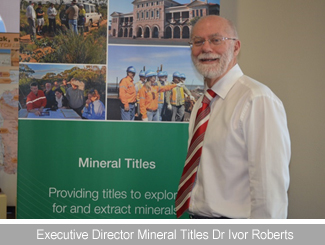
Welcome to the latest edition of the Department and Mines and Petroleum (DMP) Mineral Titles eNewsletter.
In this edition, we celebrate our Karratha team moving in to a bright new office in The Quarter and sharing this landmark building with a number of other State Government agencies.
We also record a milestone legislative change with amendments to the Mining Act 1978 as part of the Licensing Provisions Amendment Bill 2015 now cutting red tape to save industry and the State Government time and money.
We are also making good progress with testing our new online version of the highly popular TENGRAPH mapping system planned to be rolled out in the coming months.
And now another prospecting season is upon us – a little earlier this year thanks to the cooler summer – and we are gearing up for the 2017 campaign to promote the Seven Golden Rules that help keep people safe and encourage responsible, safe prospecting.
I hope you enjoy this edition and I welcome any feedback from tenement holders and other stakeholders.
Ivor Roberts
Executive Director
Mineral Titles
Karratha team moved house
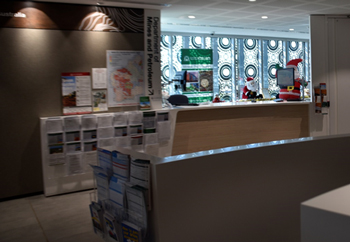
The Department of Mines and Petroleum’s (DMP) Karratha team has settled in at The Quarter, a new building shared by a number of State Government agencies.
DMP’s move to online lodgement of forms and applications meant that business normally conducted by the Karratha office was handled by the department’s Norseman team while Karratha staff prepared their new office for business as usual on Tuesday, 22 November.
“This is an ability we’ve never had before and is an added benefit of DMP’s drive to conduct all of its processes online,” Mineral Titles Executive Director Dr Ivor Roberts said.
“Our Pilbara and Kimberley customers were alerted to the office move through pamphlets detailing arrangements around the shift and we enjoyed a fairly smooth transition with no interference or delays.”
Dr Roberts said that the whole-of-government approach facilitated by co-locating a number of government bodies was aimed at improving services for customers.
DMP’s Karratha team is sharing the building at 20 Sharpe Avenue, Karratha, with Departments of Agriculture and Food, Commerce, Water, Education, Transport and Finance, the Housing Authority, Landcorp and the Pilbara Development Commission.
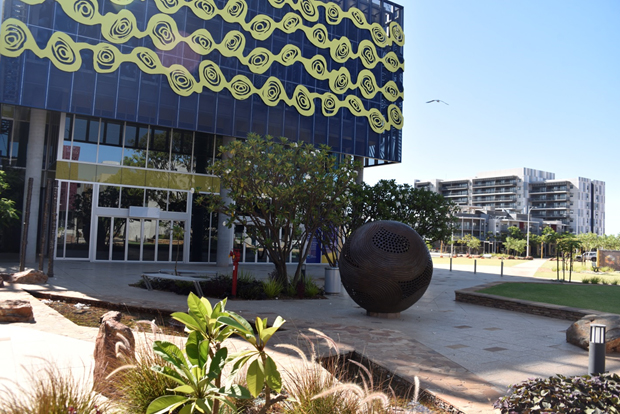
Mining Act amendments cut red tape
Amendments to the Mining Act 1978 passed by State Parliament on 16 November last year as part of the Licensing Provisions Amendment Bill 2015 are cutting red tape to save industry and the State Government time and money.
“The amendments have removed an outdated requirement to obtain iron ore approval, introduced Designated Tenement Contacts, and clarified who can hold Miner’s Rights,” DMP Mineral Titles Executive Director Dr Ivor Roberts said.
“It has been estimated that the removal of iron ore authorisations by the Minister for Mines and Petroleum will save the resources sector significant time and money.
“This requirement applied to all forms of iron ore applications, from exploration, prospecting and retention licences, to mining leases.”
Dr Roberts said that iron ore authorisations dated back to the 1960s when the industry was in its infancy and iron ore was identified as a strategic resource.
“Removing the requirement to submit often lengthy and expensive evaluations is particularly good news for junior miners,” Dr Roberts said.
The formalisation of the Designated Tenement Contact (DTC) system follows a successful voluntary scheme introduced in May this year by DMP.
“We introduced the Designated Tenement Contact (DTC) initiative after feedback from stakeholders who felt a designated point of contact would be a significant advantage,” Dr Roberts said.
“It is also part of DMP’s ongoing commitment to encourage customers to use our online services and the use of emails for routine correspondence.”
Dr Roberts said that the section of the Mining Act relating to Miner’s Rights had referred to a “natural person” being eligible and that had been replaced by “any person”.
“This allows for a corporation to apply for a Miner’s Right,” Dr Roberts said. “It is only a small change, but DMP is keen for all of its processes to be as straightforward and transparent as possible, and this clarification was seen as a necessary step in that direction.”
DMP testing new mapping system before roll out
The Department of Mines and Petroleum is testing a new online version of its highly popular TENGRAPH mapping system that is planned to be rolled out in the coming months.
TENGRAPH displays the position of Western Australian mining tenements and petroleum titles, giving an accurate picture of land under mining activity, and is used to determine ground available for mineral exploration.
“TENGRAPH has been a valuable and reliable resource for explorers since 1992 when it first functioned as a mainframe system, but it is showing its age and has links to technology that is no longer supported,” DMP Mineral Titles Executive Director Dr Ivor Roberts said.
“TENGRAPH has served the department well over the years and we have had a great return on our investment, but it does not provide the seamless coverage of the entire State that the new browser-based system does.
“It also doesn’t provide image data and all the other bells and whistles that the new system offers.”
Dr Roberts said that the new TENGRAPH Web is a more business oriented system with a strong focus on tenements, approvals and increased functionality.
“It is streets ahead of the old system, but it will not be a totally new experience for people using DMP’s interactive geological mapping system, GeoVIEW.WA, because there are commonalities with the TENGRAPH Web interface,” he said.
Dr Roberts said that high quality maps could be produced with TENGRAPH Web.
It has a new interface that uses the same pan and zoom mouse commands as Google Maps and it has the ability for users to include overlays of geology and topography.”
Dr Roberts said that the new system would operate in tandem with the old TENGRAPH so that people had the ability to use either system until they were comfortable with TENGRAPH Web.
“Usage will be monitored and we expect most people to migrate to the new system within about a month of the roll out, but we will continue to provide access to the old TENGRAPH until everyone is happy,” he said.
“We are gathering feedback from selected external users during the testing period and will continue to seek feedback from all users after the new system is rolled out.”
There will be opportunities for people to register for training in Perth and Kalgoorlie and how-to videos will be posted on the DMP website.
Fact file:
- TENGRAPH Web also provides links to other DMP systems including:
- Mineral Titles Online
- Petroleum and Geothermal Register (PGR)
- WAMEX (mining tenement open file exploration reports)
- MINEDEX (mine site and mineral deposit information)
- TENGRAPH Online has about 12,000 registered users.
- Being solely web-based, users will access TENGRAPH Web directly through DMP’s servers, rather through a separate (CITRIX) platform.
- The new interface uses the same pan and zoom mouse commands as Google Maps and GeoVIEW.WA.
- The new system retains all existing TENGRAPH features such as links to Google Earth, Mineral Titles Online, WAMEX, MINEDEX and PGR, plotting tools and custom colouring objects.
- Layers are easier to turn on and off.
- High quality maps can be printed from the new system.
- Geology and topography overlays are included.
- Transparency slider bars can be used to change the visibility on the map.
- Users can save results from searches and selections to a CSV file or shapefile (geospatial vector data format) for use in other Geographic Information Systems (GIS).
- Users can add shapefiles by dragging a file directly onto the map display.
- Landgate aerial photography can be displayed.
- Users have easy access to scanned historical tenement maps.
- TENGRAPH Web will benefit external users through:
- Improved access to DMP spatial and non-spatial information.
- Better service delivery delivered by enhanced functionality.
- Improved appraisal processes integrated with eLodgement.
o Ability to rapidly respond to industry or legislative change because TENGRAPH Web is consistent with the department’s spatial data infrastructure.
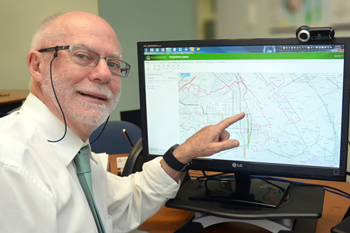
Seven Golden Rules updated for prospecting season
A much cooler February than usual this year encouraged prospectors out earlier than usual into the State’s many hunting grounds for gold.
Staff at Mining Registrar’s offices reported bigger numbers than usual seeking Miner’s Rights – the most common prospecting permit used by tourists visiting Western Australia.
Miner’s Rights allow holders to prospect on Crown Land with handheld tools such as metal detectors, and to take and keep samples or specimens up to 20 kilograms. A Miner’s Right permit can be obtained from any Mining Registrar office for $25 per person.
Prospecting on certain classes of Crown land may require written permission from the pastoral or mining lease holder.
In the past five years, the Division has issued more than 16,000 Miner’s Rights for prospecting in Western Australia.
In line with the department’s Seven Golden Rules for Prospecting, prospectors are encouraged to carry Personal Locator Beacons (PLBs), which can be purchased from most outdoor stores and are ideal for use in remote areas as they do not rely on telecommunication networks to submit a signal.
As it does every prospecting season, DMP focuses on making people aware of the in-depth information provided in its now-updated popular Seven Golden Rules pamphlet available online and at all Mining Registrar’s offices.
- Obtain a Miner’s Right permit
- when prospecting on vacant Crown land ($25 from any Mining Registrar’s office).
- Put safety first
- Make sure you have enough water, fuel, maps, first aid supplies.
- Give serious consideration to taking some form of telecommunications and a global positioning system to fix locations, and a Personal Locator Beacon.
- Obtain a 40E permit
when prospecting within an exploration tenement (if you don’t have written permission from the tenement holder). - Get written permission
from the tenement holder when prospecting on:- a mining lease
- an exploration licence (if you don’t have a 40E permit)
- a prospecting licence
- Comply with all legal requirements
when prospecting on a pastoral lease. This includes gaining permission from the pastoralist for access to certain areas. - Show respect when on Crown land
because it is used or set aside for many purposes, including:- pastoral and grazing activities
- parks and forests
- the use and benefit of Aboriginal people
- mining activities
- Fill any holes
that you dug and repair ground that has been disturbed.
Prospectors can visit their nearest Mining Registrar’s office for more information and to obtain a copy of Prospecting in Western Australia or download it from www.dmp.wa.gov.au/prospectingwa
Our focus on the community
Applications are now being assessed for the 2017 Community Partnership Award for innovative and meaningful partnerships.
The award publicly recognises Western Australian resources industry organisations that show outstanding achievement and leadership in building community partnerships, creating mutually beneficial relationships, and achieving positive outcomes that extend well beyond gaining a social licence to operate.
The inaugural award was presented in October 2016 to the Midwest Economic and Employment Development Aboriginal Corporation (MEEDAC) and the magnetite miner Karara Mining Limited (Karara).
The company was recognised for exceeding its social responsibility by forming a partnership with MEEDAC to create and run a sustainable commercial 2000-hectare farm called Innovation Park about 200 kilometres east of Geraldton.
The farm produces eggs, fruit and vegetables which are sold locally and in the Karara mine site, and donated to the local food bank.
Three associated awards were presented:
- Enduring Partnership Award: Rio Tinto Iron Ore and Scitech Discovery Centre.
- Community Partnership Merit Award: Cliffs Asia Pacific Iron Ore and Esperance Senior High School, Esperance Anglican Community School, Merredin College and Southern Cross District High School.
- Community Partnership Merit Award: Newmont Boddington Gold and Gnaala Karla Booja Native Title Claimants.
The 2017 Awards will be held in September or October this year and nominations from individual operators or resources or extractive industries companies will be open until 10 April.
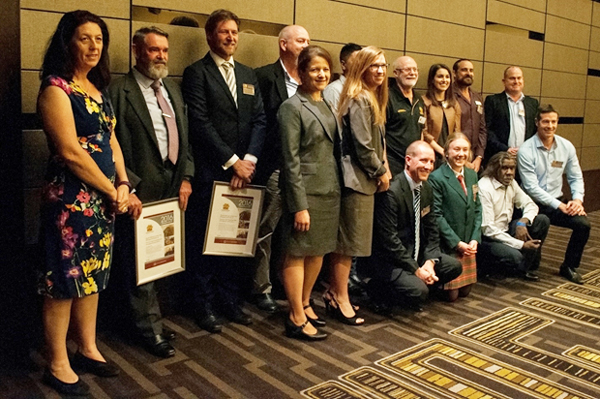
Mineral Titles completes OEPA spatial datasets trial
The Department of Mines and Petroleum’s (DMP) Mineral Titles Division has successfully carried out a project to assist the Office of Environmental Protection Authority’s (OEPA) verify and improve the quality of their spatial datasets through audits of existing data and a back-capture program.
The project contributed to red tape reduction through the streamlining of government approval processing using spatial data and information.
It also improved OEPA spatial data, benefiting both agencies, and established a close inter-agency data and information relationship.
The project reduced risks associated with implementing the State Government’s commitment to establishing a State Environmental Data Library for which DMP is the lead agency.
In addition, the project has ensured DMP has access to reliable spatial representation of OEPA assessment areas so that it can comply with its obligations under the Memorandum of Understanding between the two agencies in relation to the referral of onshore mineral exploration and mining development proposals.
Access to this data is allowing DMP to comply with proposed changes to provisions of the Mining Act 1978 related to low impact notifications currently under consideration by State Parliament.
The project plan was the key to the project’s success because it clearly articulated governance arrangements, outlined clear and measurable objectives, and detailed the deliverables and milestones.
As a result of the project, the OEPA’s spatial layers are accurate and include historic as well as current spatial representations of resource and non-resource projects.
New workflows are being implemented to ensure ongoing integrity of the spatial data, and the spatial information is being shared by OEPA across government through the regular release of spatial data to the Shared Land Information Platform.